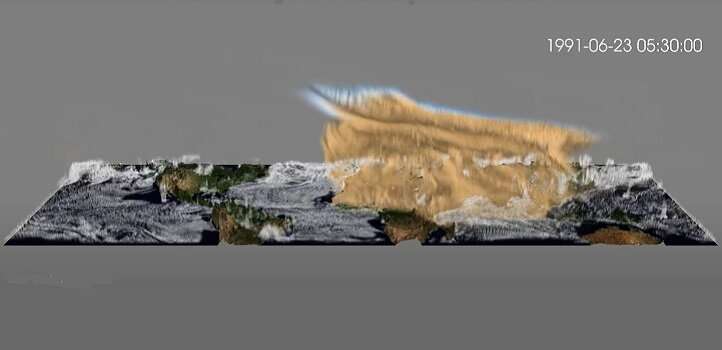Volcanic eruptions have more effect in summer

Detailed modeling of the effect of volcanic eruptions on the El Niño Southern Oscillation (ENSO) has shown that the climate response to these events depends on the timing of the eruption and the preceding conditions. The research, led by KAUST researchers Evgeniya Predybaylo and Georgiy Stenchikov, settles a long-standing debate about the role of volcanic eruptions in global climate perturbations.
"The ENSO is a feature of the tropical Pacific Ocean climate, with patterns of temperature, precipitation and wind that oscillate between warmer El Niño and cooler La Niña phases every two to seven years," explains Predybaylo. "Due to the vast size of the tropical Pacific, the ENSO controls the climate in many other parts of the globe and is responsible for droughts, floods, hurricanes, heat waves and other severe weather events. To evaluate these risks, it is essential to have proper projections and predictions of future ENSO behavior."
Climate modeling indicates that the ENSO is very sensitive to external perturbations, such as increased carbon dioxide in the atmosphere or volcanic eruptions. Even though major volcanic eruptions, like the Mount Pinatubo eruption in 1991, are known to have caused widespread cooling due to the reflection of solar radiation, such effects have been difficult to prove by modeling.
"There was previously no modeling consensus on how the Pacific Ocean responds to such climatologically large volcanic eruptions, with climate models predicting diverse and often contradictory responses," says Sergey Osipov from the research team.
Because the tropical Pacific climate is itself highly variable, the modeling needs to be performed carefully to separate the eruption-driven ocean response from random variations. This requires a large number of climate simulations using a model that can simulate both the radiative impact of volcanic eruptions and a realistic ENSO cycle. To achieve this, the team collaborated with Andrew Wittenberg from Princeton University, US, to run the CM2.1 climate model using KAUST's supercomputer.

"After running more than 6,000 climate simulations covering nearly 20,000 model years and analyzing the data," says Predybaylo, "we found that the ENSO response to stratospheric volcanic eruptions strongly depends on the seasonal timing of the eruption and the state of the atmosphere and ocean in the Pacific at the time."
In particular, the research showed that even very large eruptions seem to have little discernible effect on the ENSO in winter or spring, while summer eruptions almost always produce a strong climate response.
"The principles and techniques developed in our study could also be applied to various types of observational data and multimodel studies of future climate change, including the effects of global warming," says Predybaylo.
More information: Evgeniya Predybaylo et al, El Niño/Southern Oscillation response to low-latitude volcanic eruptions depends on ocean pre-conditions and eruption timing, Communications Earth & Environment (2020). DOI: 10.1038/s43247-020-0013-y





















